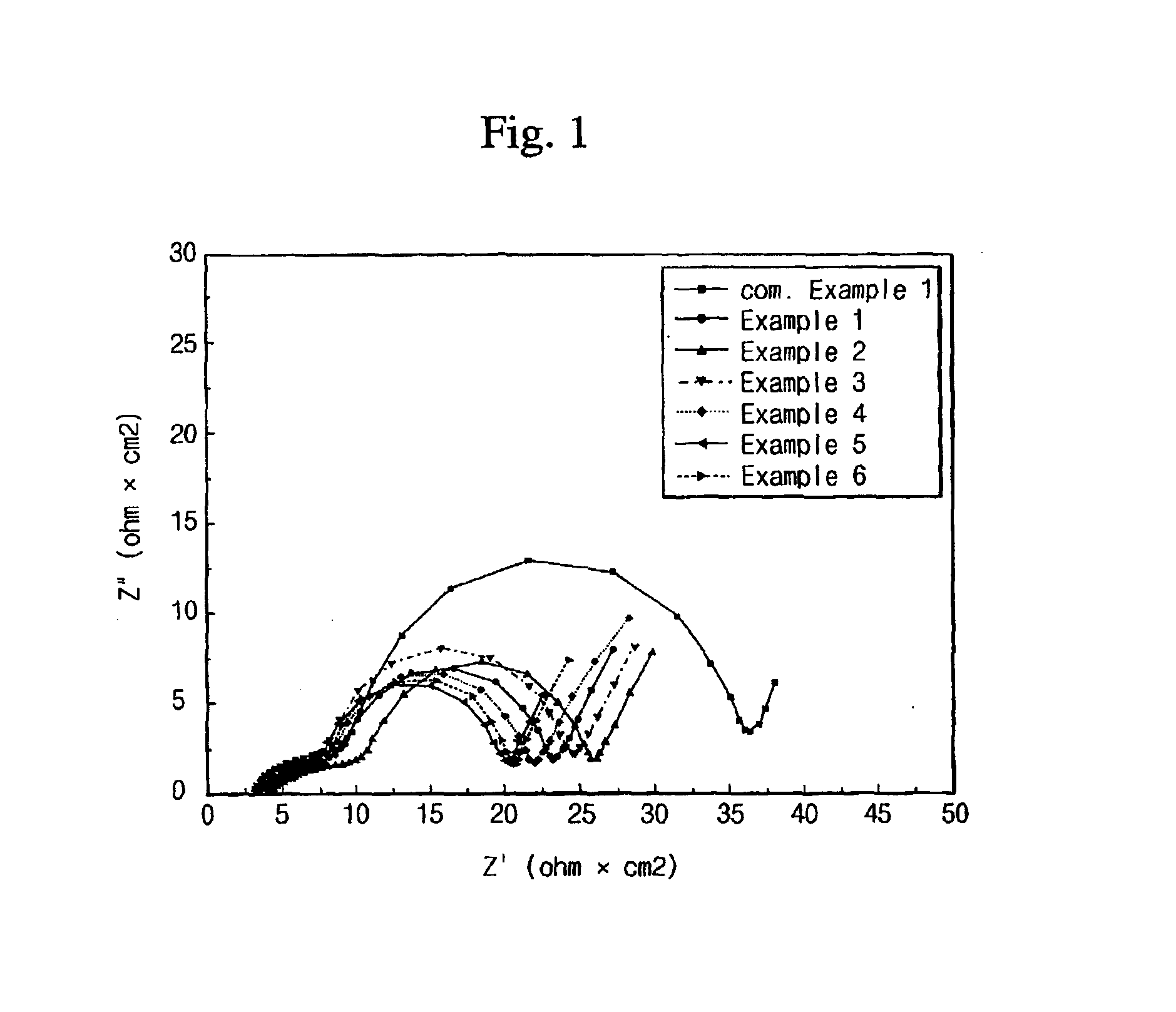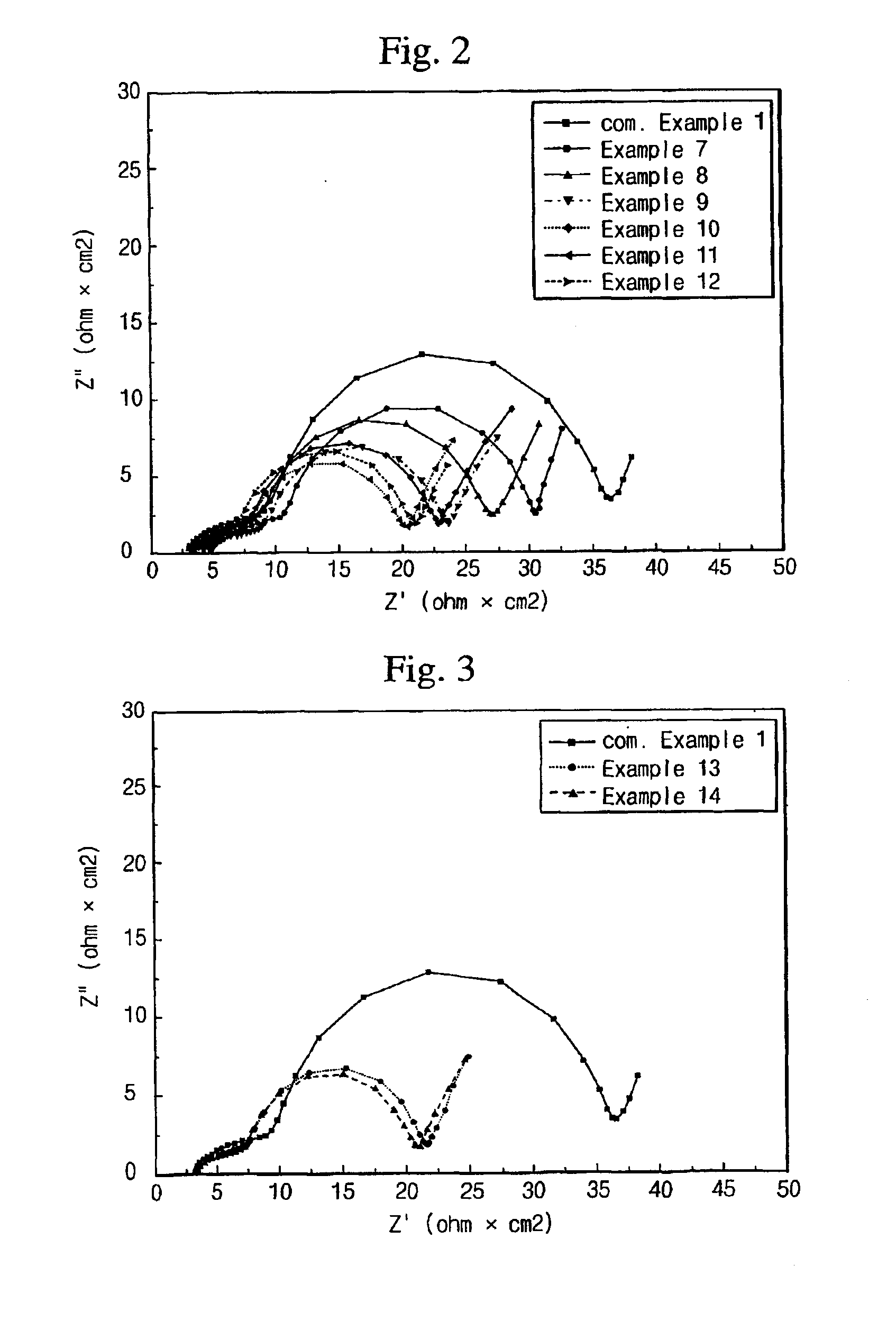Electrolyte comprising non-ionic surfactant and lithium ion battery using the same
- Summary
- Abstract
- Description
- Claims
- Application Information
AI Technical Summary
Benefits of technology
Problems solved by technology
Method used
Image
Examples
example 2
Synthesis of a Fluorine-based Ethylene Oxide Resin Surfactant F-144d-Ac Substituted with Acetyl at the End
[0031]F-144d (average n=20, mean molecular weight=2260, 2.50 g) and triethylamine (0.27 g) were dissolved in dichloromethane (25 mL) and acetyl chloride (0.57 g) was slowly added thereto at 0° C. under nitrogen atmosphere. After elevating the temperature of the mixture to room temperature, the mixture was stirred for 15 hours. After the reaction was completed, the produced solids were filtered and the solvent was distilled under reduced pressure. Diethyl ether (25 mL) was added thereto to further produce solids not produced in dichloromethane. The solids were filtered and removed, and diethyl ether was distilled under reduced pressure and removed to obtain a liquid product.
example 3
Synthesis of a Fluorine-based Ethylene Oxide Resin Surfactant F-142d-Me Substituted with a Methyl Group at the End
[0032]Potassium hydroxide powder (85%, 0.72 g) was slowly added to a solution of F-142d (average n=10, mean molecular weight=1379, 2.5 g) and 1,4-dioxane (5 mL) while stirring in a bath at 65° C. Dimethyl sulfate (0.35 mL) was added thereto at a rate of 3 drops per 5 minutes. The mixture was further stirred in a bath at 65° C. for 3 hours.
[0033]After the reaction was completed, the produced solids were filtered and the solvent was distilled under reduced pressure. Layers were separated using dichloromethane (25 mL) and water (25 mL), the organic layer was taken and dried using anhydrous MgSO4, and the organic solvent was distilled under reduced pressure to obtain a liquid product. A methyl group of the product was identified by the peak near 3.38 ppm using a Bruker 309 MHz NMR.
example 4
Synthesis of a Fluorine-based Ethylene Oxide Resin Surfactant F-144d-Me Substituted with a Methyl Group at the End
[0034]Potassium hydroxide powder (85%, 0.44 g) was slowly added to a solution of F-144d (average n=20, mean molecular weight=2260, 2.5 g) and 1,4-dioxane (5 mL) while stirring in a bath at 65° C. Dimethyl sulfate (0.21 mL) was added thereto at a rate of 3 drops per 5 minutes. The mixture was further stirred in a bath at 65° C. for 3 hours.
[0035]After the reaction was completed, the produced solids were filtered and the solvent was distilled under reduced pressure. Layers were separated using dichloromethane (25 mL) and water (25 mL), the organic layer was taken and dried using anhydrous MgSO4, and the organic solvent was distilled under reduced pressure to obtain a liquid product.
PUM
 Login to View More
Login to View More Abstract
Description
Claims
Application Information
 Login to View More
Login to View More - R&D
- Intellectual Property
- Life Sciences
- Materials
- Tech Scout
- Unparalleled Data Quality
- Higher Quality Content
- 60% Fewer Hallucinations
Browse by: Latest US Patents, China's latest patents, Technical Efficacy Thesaurus, Application Domain, Technology Topic, Popular Technical Reports.
© 2025 PatSnap. All rights reserved.Legal|Privacy policy|Modern Slavery Act Transparency Statement|Sitemap|About US| Contact US: help@patsnap.com



